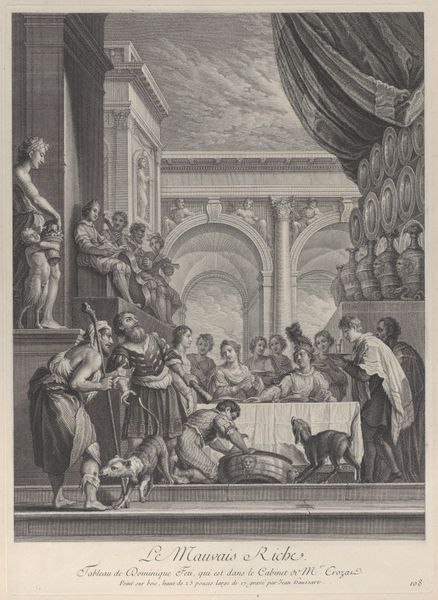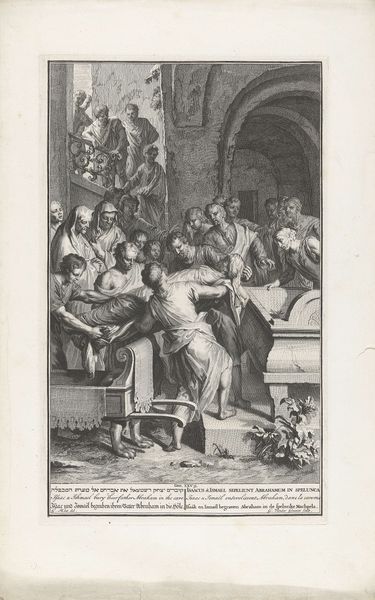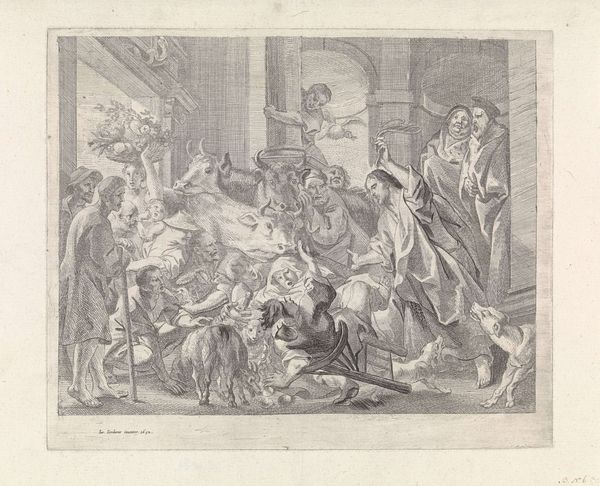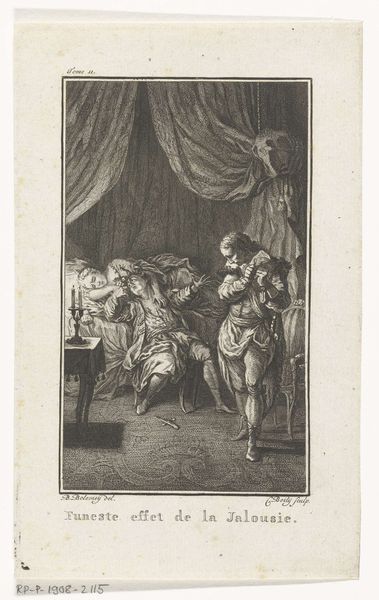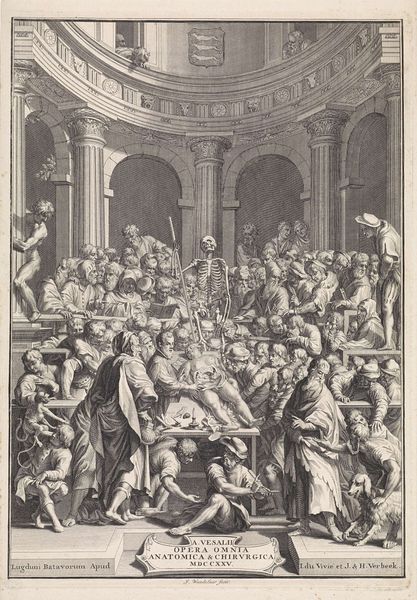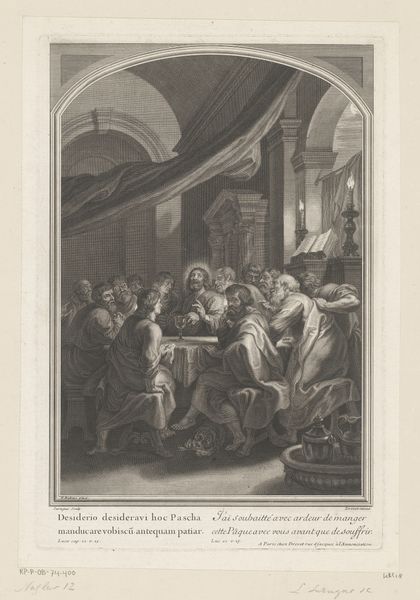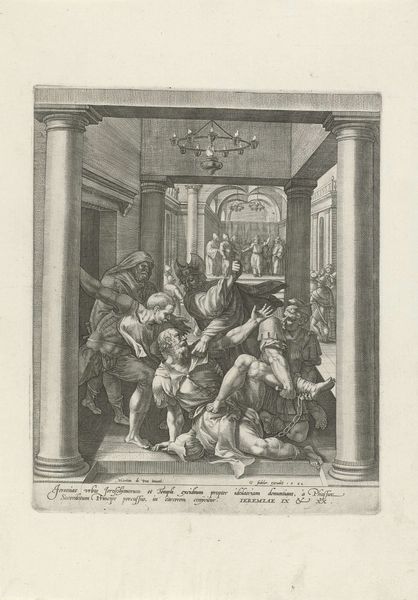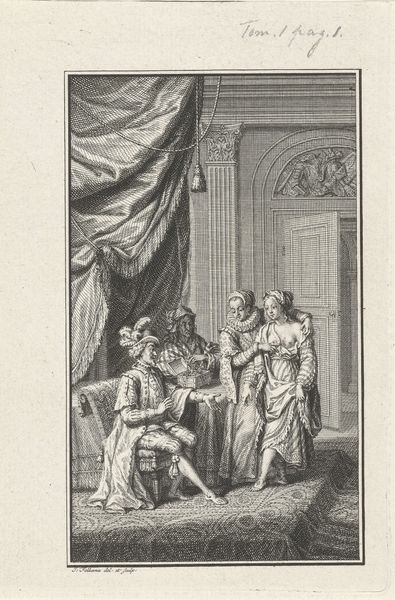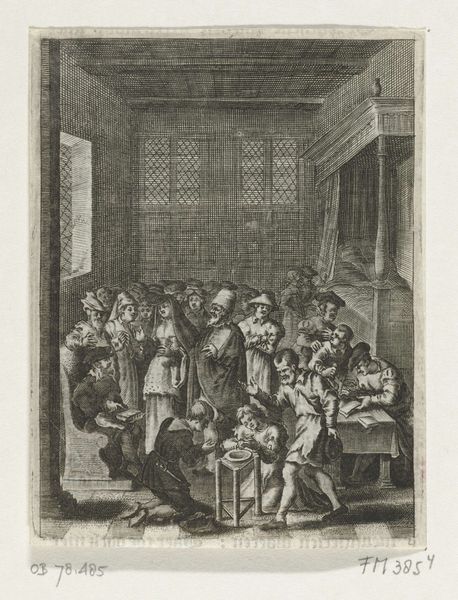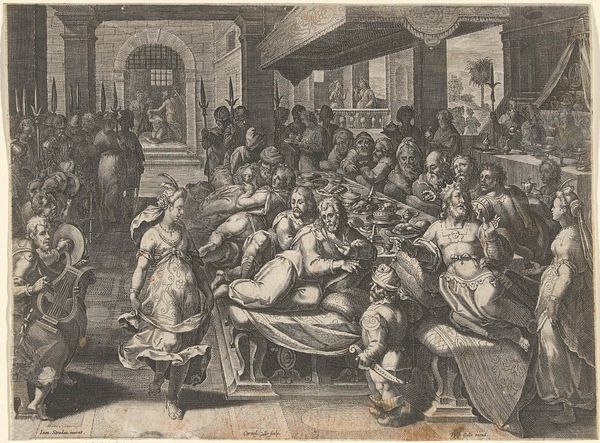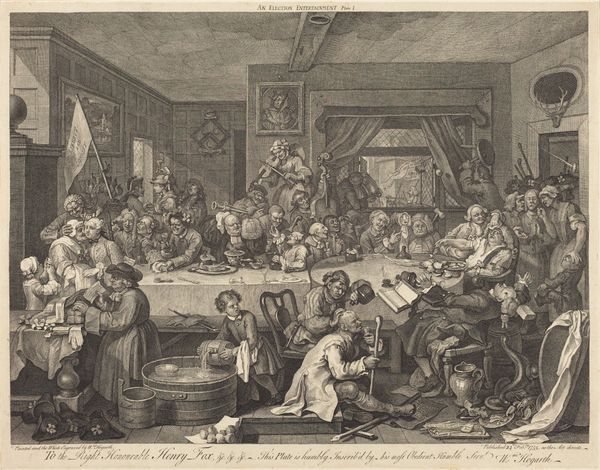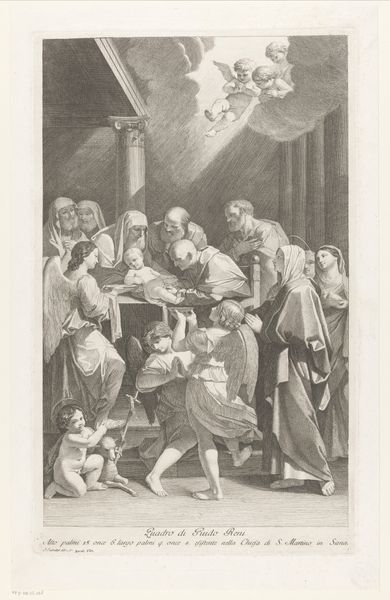
print, engraving
#
narrative-art
#
baroque
# print
#
old engraving style
#
figuration
#
genre-painting
#
history-painting
#
engraving
Dimensions: height 357 mm, width 221 mm
Copyright: Rijks Museum: Open Domain
Editor: So, this engraving is titled "Jacob Blessing His Sons," or "Jakob zegent zijn zonen" in Dutch. It's by Cornelis Huyberts, made sometime between 1720 and 1728. The level of detail that’s been etched is quite remarkable. What really jumps out at me is how the material realities of 18th-century life – the furniture, clothing, even the little dog – are so vividly depicted through the engraving technique itself. What are your initial thoughts on this piece? Curator: It's intriguing how Huyberts uses this very reproducible medium, engraving, to depict a scene of patriarchal blessing and inheritance. Notice the sharp lines, the careful cross-hatching that builds volume and texture. Engraving wasn't just a neutral method; it was linked to the wider availability and circulation of knowledge and, crucially, ideas about family and lineage at the time. Do you see any connections to its role as a disseminator of cultural norms in the piece itself? Editor: I hadn’t really considered it in terms of distribution before. I was mainly seeing the artistry of the Baroque style, the way he’s created depth… But you're right, being a print, this could have been widely shared. I wonder what sort of workshops produced pieces like this and who the consumers were? Curator: Exactly! Thinking about the labor involved - the engraver’s skill, the materials like copper plates and inks, and who had access to this image is critical. Was it for personal devotion, educational purposes, or to simply display wealth and taste? We must ask about the process of producing this, and what conditions led to that kind of image being spread. Understanding this connection is crucial to decoding this image. Editor: That makes a lot of sense. Thinking about it less as just art and more as a product of its time changes my view. It reveals so much about the economic and social factors influencing both its creation and its audience. Curator: Precisely! Materiality isn't just about what it's made of; it's about what it makes possible. And about whom the work ultimately served.
Comments
No comments
Be the first to comment and join the conversation on the ultimate creative platform.
